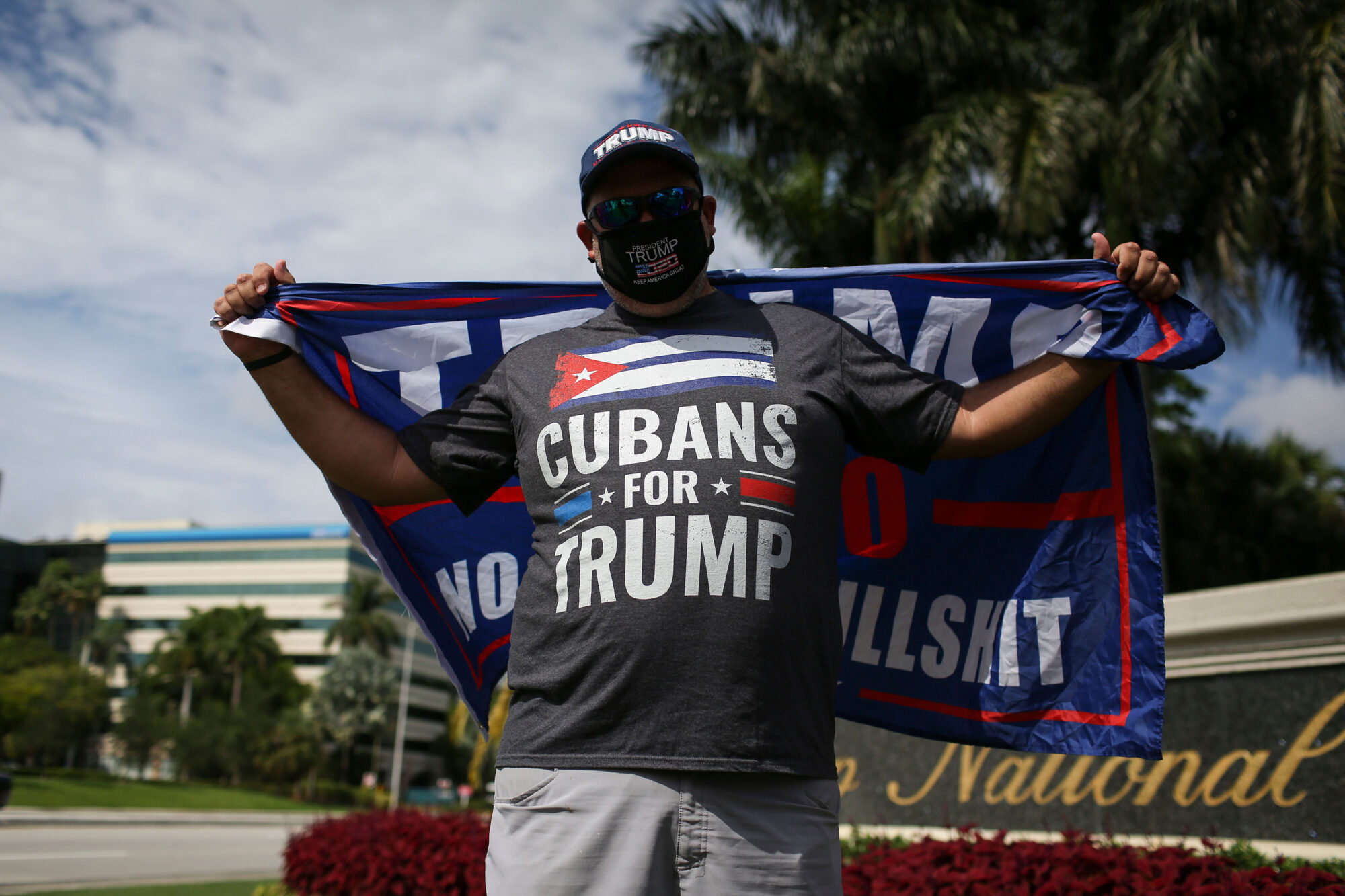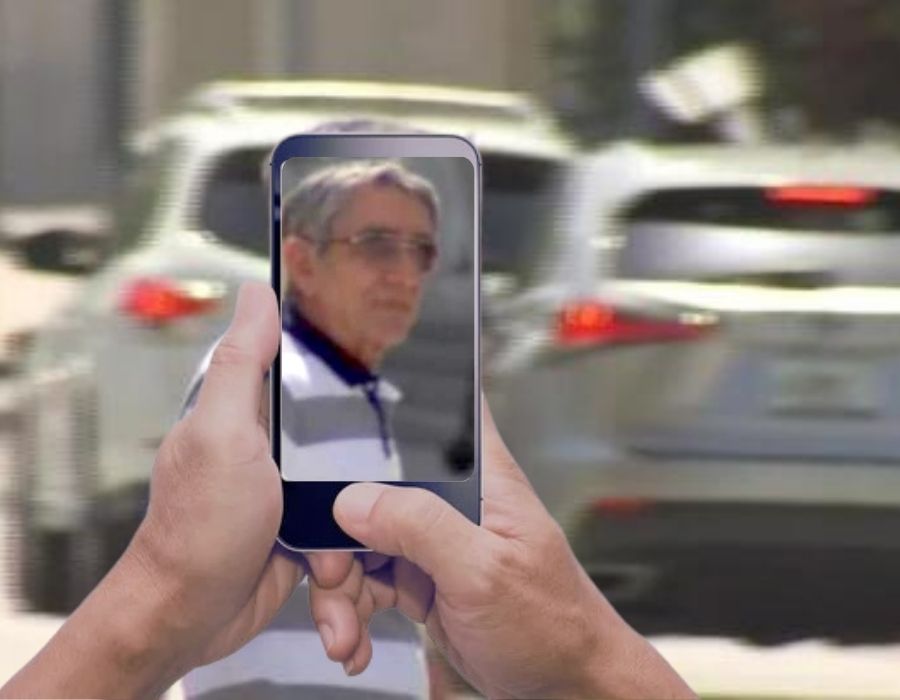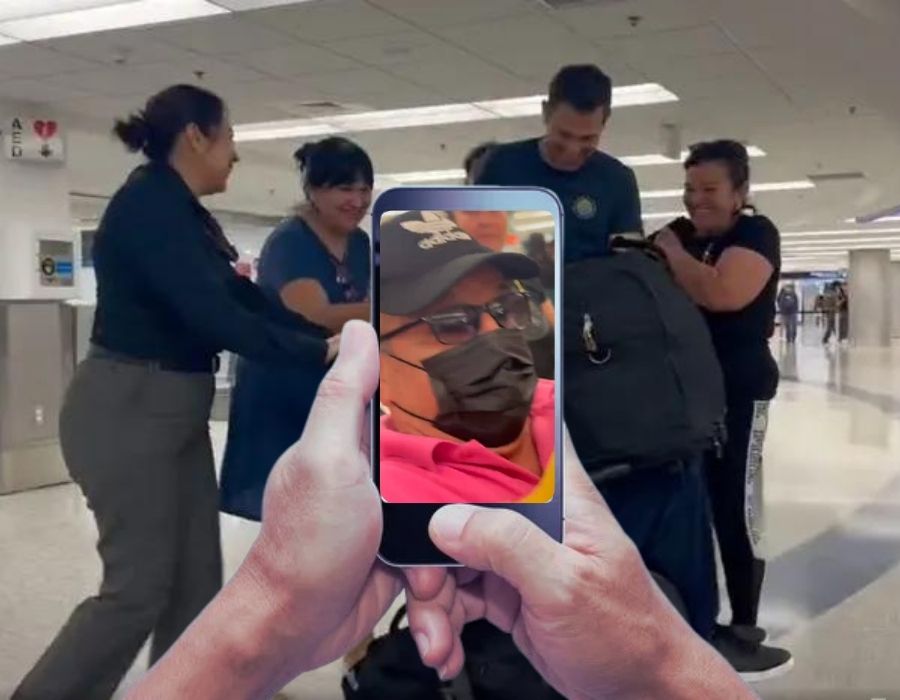If this manual is for you, surely you have been told at least once that you are a spiteful person, that the best thing you could do is to forget the “Cuba issue” because it is very toxic for you, and that there are many other things to pay attention to instead of hunting “snitchers” whose only desire, like yours, is to end their days with their families without lack of food on the table. You probably live in the United States and think that they do not have that right: you, for example, while you lived in Cuba, did not fuck up anyone’s life to ingratiate yourself with the regime.
Cuba is going through one of the most serious crises in its history. For some, it is even the worst, not so much for its immediate effects as for the widespread certainty that it will not have an end, or at least not a happy one. That is why it is not crazy to give credibility to certain demographic estimates—supported in some way by the hasty statistical response of the country’s authorities—which suggest that, between 2022 and 2023 alone, close to 18 percent of Cuba’s population emigrated. Migrants, most of whom have the United States as their final destination, number in the hundreds of thousands per year. And, of course, they include former officials and collaborators of the Cuban regime with a history of human rights violations.
In many cases, the repressors leave like the rest of the Cubans escaping the misery and lack of freedom on the island. It is not easy, therefore, to detect them, nor is it easy to know whether the past haunt their consciences or whether they have been able to wipe the slate clean to present themselves to the U.S. immigration authorities in the conviction of their legitimate right to start a new life in the same country that used to be “the enemy.”
You suspect that the first stage of punishment for the regime’s agents has arrived; that it is finally the Cuban exiles’ turn to savor the cold dish of revenge, one as sweet as it is unexpected. In the fantasy scenarios of many (which you share), that hour would begin with the “glorious” return to the homeland, when the gendarmes of the dictatorship would be tried. But the prophecy of that promised day, which is always “coming,” has never been fulfilled. Now everything indicates that many ex-repressors are going to take refuge in the same country where you were forced to move to…, and the settling of scores seems to have been served on a platter, seasoned with irony. This handbook, which is for you, regrets to inform you that things are not as you imagine.
According to a report published in August 2024 by the Foundation for Human Rights in Cuba, a Florida-based nongovernmental organization, at least 117 repressors of the Cuban regime live in the United States. According to the document, most emigrated to that country in the “last few years,” some crossing the border and others through regular channels. The figure reveals that the cases of Castro’s repressors who are subjected to deportation proceedings, including those that come to public light, are only exceptional.
Communists, go home
By law, communist militants have no right to enter the United States.
If you smell a whiff of McCarthyism, that’s because it is present. Maybe you don’t care, or maybe you approve. If your goal is to settle accounts with Castro’s repressors who manage to enter the United States, you must first know which laws are in your favor.
You probably remember the case of former judge Melody González Pedraza because it happened not too long ago and because of its coverage in the Cuban independent press. After her humanitarian parole was approved, González Pedraza went to Tampa, Florida, but was denied entry. Although she tried to apply for political asylum, the authorities ended up arresting her for perjury. The official charge against her—for which she was held at the Broward Transitional Center, Florida—is that she lied about her membership in the Communist Party of Cuba (PCC). Her formal accusation does not include the fact that it was she who, just a month before traveling to the United States, sentenced to prison Andy Gabriel González Fuentes, Eddy Daniel Rodríguez Pérez, Luis Ernesto Medina Pedraza (sentenced to four years), and Adain Barreiro Pérez (sentenced to three years). The young men—under 30 years of age at the time of the trial—were charged with “contempt.” On November 18, 2022, they allegedly threw Molotov cocktails at a jeep and the houses of several police officers and officials in Encrucijada municipality, Villa Clara. The process was based solely on statements made by a handful of State Security agents and did not follow the norms of due process. The judge herself, from the detention center where she is being held, has said that it was an arbitrary trial for which she was “coerced.” Her case, for the moment, does not augur a happy ending for her, since, so far, she has not even found a lawyer to represent her.

You are probably wondering why the former judge is not facing charges for having unjustly sent four young people to prison but for something as obsolete as communist militancy. The answer lies in the procedures followed by U.S. authorities. Laritza Diversent, a Cuban jurist and activist based in the United States, and director of the organization Cubalex, explains: “If a perpetrator is in U.S. territory, and civil society organizations offer verifiable information about their past as a repressor, institutions such as the Department of Justice and the FBI could intervene in the case. However, in this process, the first thing the authorities do is review the accused person’s immigration papers to find out if he or she lied about being a member of the PCC. If they did, the person would pay for lying to the immigration authorities and not for human rights violations.”
The U.S. Immigration and Nationality Act is very clear in this regard: it does not concede any immigration permit to those persons who have been members of a communist or totalitarian party. According to U.S. authorities, this measure is because “membership or affiliation with a communist or other totalitarian party is inconsistent and incompatible with the Naturalization Oath of Allegiance to the United States, which includes supporting and upholding the Constitution and laws of the United States.”
By law, Communist militants are not entitled to enter the United States unless…
It is not necessary, therefore, to have been a repressor of the regime, but a simple member of the PCC, or the Young Communist League (UJC), to void the possibility of emigrating to the United States. However, this rule is not absolute and includes the following caveats: a member of the PCC may enter the United States as long as they have put an end to their membership at least five years prior to applying for the immigration benefit. In the case of opting for U.S. citizenship, a minimum of ten years must have passed from the time they renounced their militancy.
“Those who are members of the PCC, in principle, have nothing to do in the United States, nor ask for any immigration recognition,” says Cuban-American lawyer Santiago Alpízar, who leads the initiatives Cuba Represión ID and Cuba Demanda Inc. The latter, in addition to working on the identification of Castro’s repressors living in the United States, has been recognized as a lobbying organization before the European Parliament.
“If a member of the PCC intends to enter the United States,” Alpízar continues, “they have to declare clearly and convincingly that they were a “simple” militant of that party and that they accepted membership for a reason of personal interest; but not just any reason. I mean that, for example, their membership was a mandatory requirement to have a professional career. In addition, they must prove that they did not cause harm to others; and that they, from their condition as militant, did not cause any harm to another citizen. If their victims denounce and prove that such person has lied regarding the above, their immigration permit must be denied or revoked.”
Those Who Flout the Law
U.S. law can be tough on immigration fraud, but it seldom is.
U.S. law can be very severe and lead to more than just deportation for those who circumvent it. Technically, according to Santiago Alpízar, the crime of perjury is punishable in the United States by up to five years imprisonment or a fine of $250,000. You probably think that the price to pay for lying to the U.S. immigration authorities is very high, and you may even wonder how so many people may risk doing it. The answer lies in the fact that these measures are rarely enforced.
“Although these sanctions are provided, criminal law is the precautionary law of last resort, so it is not often used in these cases. Very few people are subject to criminal sanctions for immigration fraud. What is usually used by the authorities is the Immigration Law itself, which provides for the removal of the immigration benefit, leading to expulsion from the country. However, this is a long and complex process in which the accused person, of course, has the right to defense and appeal,” explains the Cuban-American lawyer.
U.S. law may be severe, but it is not insurmountable.
If immigration laws and authorities were infallible, this manual would be meaningless. Sometimes, even, they are circumvented not by anonymous repressors, but by high-ranking officials of the Cuban regime who, you imagine, should be on some sort of blacklist.
You probably remember that in mid-August 2024 Manuel Menéndez Castellanos arrived at Miami International Airport after having obtained a visa in Cuba for family reunification. He went through the airport incognito. He was in a wheelchair, wearing dark glasses, a mask covering his face, and escorted by his relatives. Perhaps you saw on social networks the video of the moment when the Cuban-American journalist Mario J. Pentón recognized him and approached him in search of a statement, and how Menéndez Castellanos and his relatives avoided him.
Manuel Menéndez Castellanos was what could be considered a “big shot” of Castroism. From a worker of the Electric Company in Havana, he rose to become an official in the Ministry of Energy and Mines and the Central de Trabajadores de Cuba (the Cuban official union) until, in 1993, he was appointed first secretary of the PCC in Cienfuegos, a position he held for a decade. He was then elected as a deputy to the National Assembly and a member of the Council of State. Meanwhile, he served as head of the “Coordination and Support Team of Commander-in-Chief Fidel Castro,” a parastatal structure created by the late dictator, which often operated above official institutions. According to his Linkedin profile, during the last few years, he worked as a senior investment consultant at the Havana International Center, an organization in charge of managing contracts and selling educational services of the University of Havana abroad. So far it is unknown whether any formal charges have been brought against him for lying to U.S. immigration authorities.
Shortly before, in April 2024, the U.S. immigration authorities accepted the request for political asylum of Arely Casañola Quintana, who, although she did not rise too high in the partisan sphere, did reach the position of president of the Municipal Assembly of People’s Power in Isla de la Juventud between 2012 and 2018. Casañola, curiously, ran with much better luck than her successor, Liván Fuentes Álvarez, who was denied his request for humanitarian parole; who knows if due to his history as a PCC militant.
If you are familiar with these cases, you may also remember Saúl Santos Ferro. For many years, Santos Ferro, who had been head of the State Security Department in the municipality of San Cristóbal, Artemisa province, acted as the regime’s bloodhound against all kinds of political dissent, and he unjustly sent many opposition members to prisons in the western part of the island. One day in 2012, he arrived in the United States to spend his old age there. Barely a year later, he obtained permanent residency in that country, and during the following years, he lived the life of a peaceful retiree in Miami. His luck ran out in 2019 when someone recognized him in a supermarket. It is only known that this person took a photo of Santos Ferro with a cell phone and sent it to the organization Cuba Repression ID and that the latter then handed it over to the FBI.
Shortly thereafter, Saúl Santos Ferro, then 74 years old, was arrested and sentenced by a judge of the Southern District of Florida to six months in jail, plus two years’ probation, and to pay restitution of more than 12 thousand dollars for having committed perjury before the immigration authorities of the country and, based on that lie, to have enjoyed the benefits of social security. For the first time, a repressor of the Cuban regime was identified and then punished. In August 2024, he was finally returned to Cuba along with 47 other deported Cubans; however, Cuban authorities refused to receive him and sent him back to the United States on the same flight. Santos Ferro now lives in the United States.
Menéndez Castellanos, Casañola Quintana, and Santos Ferro were only able to obtain immigration benefits in the United States after they lied about their histories as members of the PCC. Even if more than five years had passed since they left, none of them was during their heyday a “simple” militant.

“It bothers me a lot to see those bastards come in like that, having lied, and surpassing in time and disposition of their cases others who are not of their ilk. I have a drawer full of I-134A humanitarian parole applications that have been waiting for more than a year, even people I have sponsored, while Judge Melody González Pedraza, for example, in just a few days received permission to enter the country, after having unjustly sanctioned four individuals for political reasons,” Alpízar emphasizes.
According to the Cuban-American jurist, one possible reason why so many people have gotten around U.S. laws is the deficient work of the State Department, which, through its consular service, has to rigorously inspect and review—including through interviews—all visa applications. On the other hand, the bureaucracy in these matters is immense, and the United States, which must permanently deal with an uncontrollable immigration crisis, has more pressing concerns at its borders, such as the entry of members of terrorist or criminal groups and spies from many other countries.
However, once the illegality has been committed, how should one proceed so that, for example, Manuel Menéndez Castellanos is deported to Cuba?
“Menéndez Castellanos lied in the application he filled out in Havana, there is no doubt about that. The only way to withdraw his benefit is for the government to establish a process against him and for a judge to look at his case. Therefore, what proceeds is to file a complaint with evidence of his record as a high official of the dictatorship, which in his case is very easy to find,” says Alpízar. “Then, he is presented with a notification to appear in court. From then on he would be in a process of expulsion from the country.”
For Being Repressors, not Communists
The Magnitski Act
The legal process against repressors in the United States—not for simple communist militants, but for being perpetrators of human rights violations—works a bit like fishing laws in some parts of the world: only big, adult fish can be caught… the “big fish.”
According to Laritza Diversent, both in the United States and Canada, and in some European countries, there are laws that administratively punish people who have committed serious human rights violations. The best known, applied in the United States, is the Global Magnitsky Human Rights Accountability Act. Named after the Russian lawyer Sergey Leonidovich Magnitsky (who died in prison shortly after exposing a large-scale corruption case involving Kremlin officials), it imposes individual sanctions on perpetrators of serious human rights violations and corruption, most often limited to visa restrictions and the freezing of accounts and assets in the United States, even when such assets are formally held in the name of another person. Their enforcement, it is worth clarifying, does not depend on any court, but on the U.S. government.
“The Magnitski Act, in the case of Cuba, was activated in 2021 for the Minister of the Armed Forces, Alvaro López Miera, and the repressive special forces known as Black Berets, which belong to the Ministry of the Interior. There are other more specific individual sanctions against Raúl Castro and his children, as well as against some members of the government, but these are only limited to the restriction of visas to enter U.S. territory, therefore, they do not affect their assets,” the Cuban lawyer indicates.
The current U.S. administration has hardly applied the Magnitski Act, according to more than 90 human rights organizations from around the world, including Cubalex, which on September 5 signed a joint letter addressed to Secretary of State Antony Blinken. In coalition, since 2017, these organizations have sent to the State Department some 160 substantiated recommendations regarding “perpetrators of human rights abuses and corruption” in more than 60 countries, all eligible for Magnitski Act sanctions. “However,” the missive reads, “throughout the Biden administration, we have noted with concern the steady decline in the use of global Magnitski sanctions, with three consecutive fiscal years with fewer primary designations than the previous year.”
Another warning to the Biden administration about the need to control the entry of repressors—in this case, exclusively Cubans—into the United States occurred in the middle of this year. The letter, signed by Republican Congressmen María Elvira Salazar, Carlos Giménez, and Mario Díaz-Balart, and addressed to Blinken and Homeland Security Secretary Alejandro Mayorkas, insists that the government should “carefully screen those seeking to enter the country to ensure that they are not human rights violators.” They add, “human rights violators should not be granted entry into the United States while innocent July 11 protesters languish in Cuban jails.”

The key is in the word “grave.”
Certainly, not all political repressors can be sanctioned. Only those who have committed “serious” human rights violations are considered under the Magnitsky Act. Therefore, the neighborhood “snitcher” or the low or mid-ranking State Security officer that you may find now in the supermarket, in the bar, in some neighborhood in Hialeah or Tampa, has—legally speaking—the same rights as you to reside in the United States.
“There are people who on social networks point to someone because they snitched in their neighborhood. But to initiate a process against them you have to demonstrate how that person seriously affected the security and integrity of a citizen or a group of citizens. Snitching is not a serious violation of human rights,” says Laritza Diversent. “The case of judges and prosecutors who have collaborated with the regime in cases against activists and demonstrators is different and more complex and has to do with the chain of command. They can be considered people who have committed serious human rights violations. Although they cannot be considered direct perpetrators, they are considered accessory after-the-fact.”
To understand the category “accessory after-the-fact” we must start by accepting that in Cuba there is a legal system no matter how arbitrary. Therefore, people convicted for political reasons must necessarily go through a judicial process that involves the actions of judges and prosecutors.
“If the prosecutor does not use the functions given to them by law on behalf of the State and if the judges do not sign the sentences, those people could not go to prison. Without them, the Ministry of the Interior cannot deprive someone of freedom for years. And to claim that they had no other option, as former judge Melody González Pedraza is doing now, is useless. Not all judges and prosecutors in Cuba are accessories after-the-fact. But when you have a position for which you obtain privileges in exchange for carrying out illegal orders and you accept it, you are responsible and must then assume the consequences,” Lartiza Diversent explains.
Suppose by now, after knowing that the U.S. authorities do not pay much attention to the entry of Cuban repressors into their country and the laws against them are not what you expected, you have not abandoned this manual. In that case, you should know much of the responsibility for the impunity of these subjects lies in the passivity of the victims and the Cuban community in the United States in general. Not everyone is willing to identify and denounce the perpetrators of human rights violations on the island. Others, for a variety of reasons, do not have the resources to do so.
Prosecuting a Cuban repressor, or at least bringing a case against them, involves gathering verifiable information about the serious human rights violations they committed. It is not enough, as many believe, a post on social networks or a note in the press. Each case entails an investigation as comprehensive as possible, in which organizations such as Cuba Represión ID, Cuba Demanda, or Cubalex can collaborate.
“These processes take an argumentation that is difficult to achieve because many times the victims do not denounce and there is not enough evidence of the facts. It is common for someone to be arrested in Cuba and that person denounces the aggressor on social networks, but rarely can they identify them with accurate data. I dare say that there is no widespread awareness in civil society about documentation (to verify the identity of the victimizers); not even with a view that, in the future, during a transitional process, these people can be judged. Sometimes we only have a pseudonym, but the date of birth and their first and last names are indispensable requirements for, for instance, the U.S. government to receive your complaint. The testimony of the victim is also very necessary, that they can provide evidence to support their testimony, and that they rely on civil society organizations,” says Laritza Diversent.
This manual has nothing more to say. It is probably not the witch-hunting decalogue you were hoping for, but you already have some tools, if you finally decide to devote yourself to the task.



